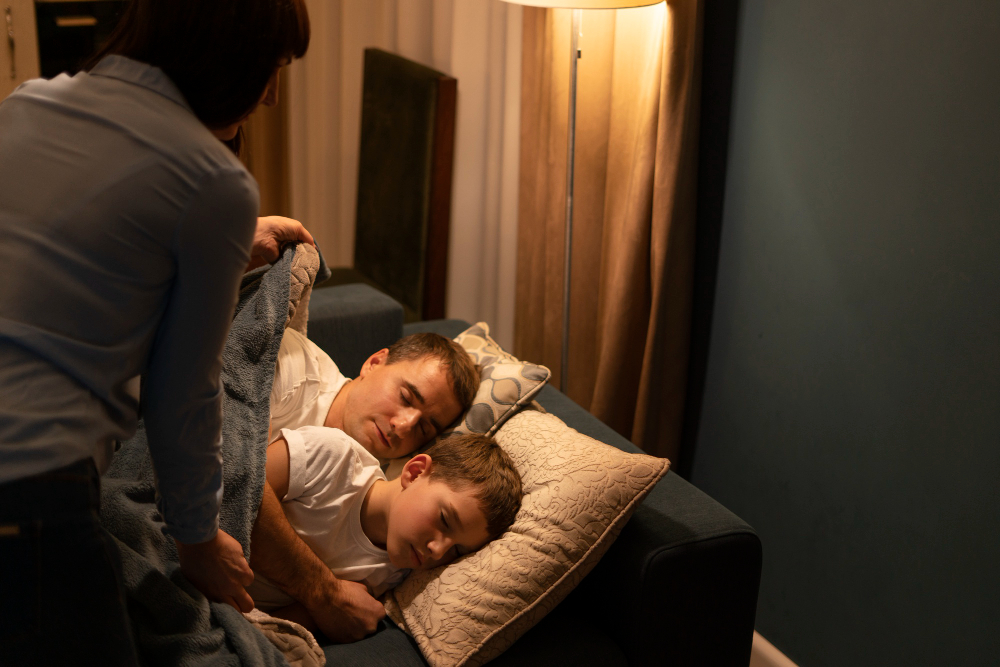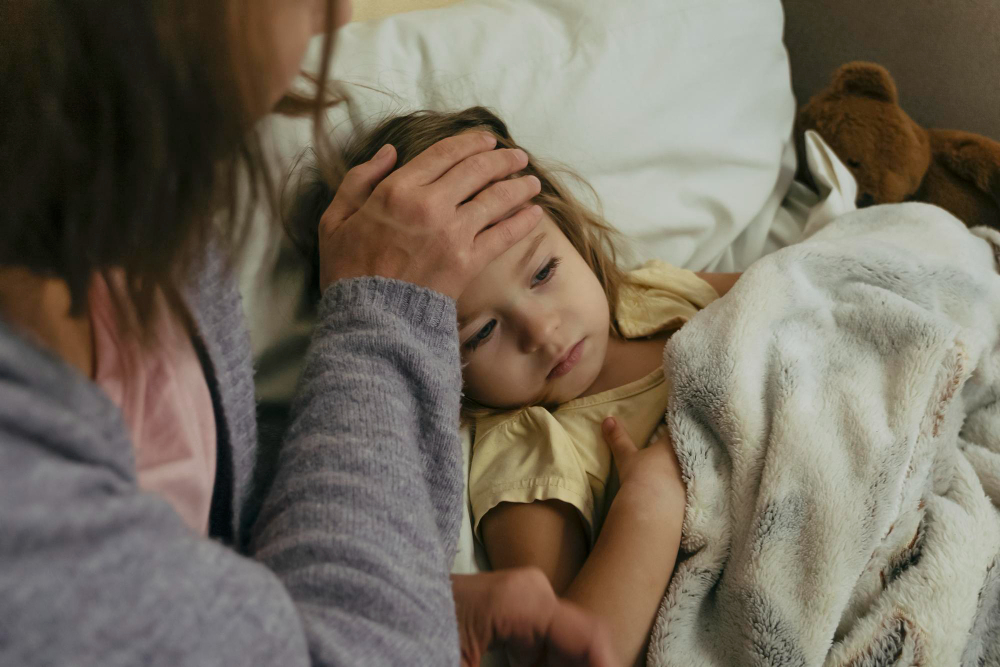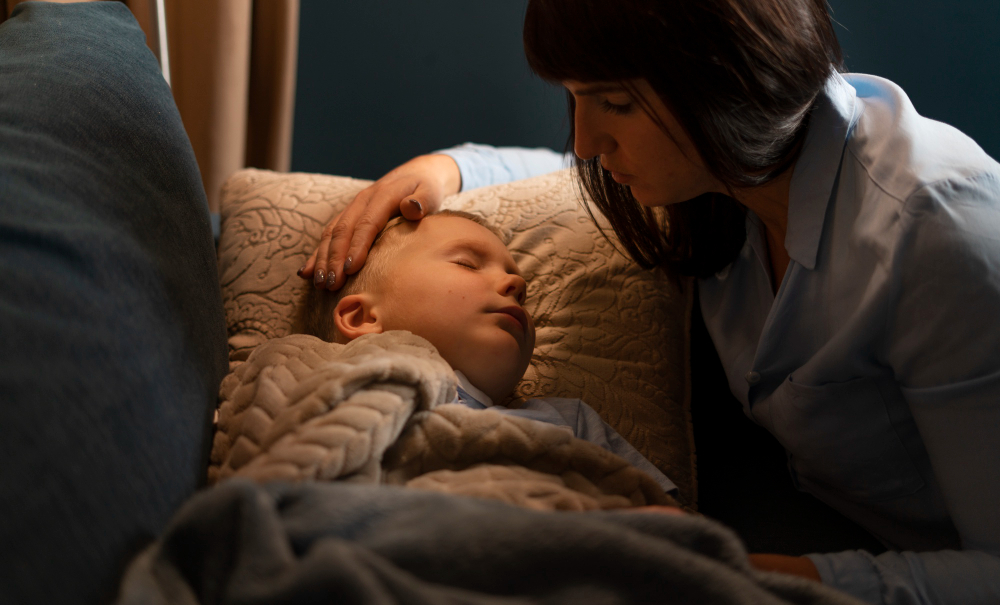Sleep apnea is often thought of as an adult condition, but it can affect children as well. In fact, sleep apnea in children can be even more difficult to identify due to the different ways it manifests. Parents may overlook signs such as snoring, difficulty waking up in the morning, or behavioral changes. However, untreated sleep apnea in children can lead to developmental delays, growth issues, and a range of other health complications. Early diagnosis and treatment are essential to ensure that a child’s sleep and overall health are not compromised.
In this blog, we’ll explore the causes, symptoms, and risks of sleep apnea in children, and provide guidance for parents on when to seek medical help.
What is Sleep Apnea in Children?
Sleep apnea in children is a sleep disorder in which a child’s breathing is repeatedly interrupted during sleep. These interruptions may last a few seconds to minutes and can occur multiple times throughout the night. The two primary types of sleep apnea in children are:
- Obstructive Sleep Apnea (OSA): This is the most common type, where the airway becomes blocked, usually by enlarged tonsils or adenoids.
- Central Sleep Apnea (CSA): Less common, CSA occurs when the brain doesn’t send proper signals to the muscles that control breathing.
While OSA is more common in children, CSA can also affect children with certain medical conditions, such as neurological disorders or congenital heart conditions.
Common Symptoms of Sleep Apnea in Children
Recognizing the signs of sleep apnea in children can be tricky since the symptoms are often subtle and may overlap with other conditions. Common symptoms to watch for include:
1. Loud Snoring
One of the most obvious signs of sleep apnea in children is loud, frequent snoring, often accompanied by pauses in breathing during sleep. If your child’s snoring is consistently loud or irregular, it’s worth consulting a pediatrician.
2. Gasping or Choking During Sleep
Children with sleep apnea may wake up gasping for air or even choking. These episodes may happen without the child being fully aware, but they are a key indicator of sleep apnea.
3. Excessive Daytime Sleepiness
Children with sleep apnea often have trouble staying awake during the day. They may fall asleep during school, while watching TV, or while playing, and may appear unusually tired or irritable.
4. Behavioral Issues
Sleep deprivation caused by sleep apnea can result in hyperactivity, mood swings, difficulty concentrating, and poor performance in school. It may also contribute to problems like anxiety or depression.
5. Difficulty Waking Up in the Morning
Children with untreated sleep apnea often struggle to wake up in the morning and may appear sluggish or groggy for hours after getting up.
6. Poor Growth and Development
If a child isn’t getting enough restorative sleep due to sleep apnea, it can hinder their growth and development. This may include delays in physical growth or learning milestones.
7. Mouth Breathing
Children with sleep apnea often breathe through their mouths, even when they are awake. This is due to nasal congestion or airway obstruction, which prevents them from breathing easily through their nose.
Causes and Risk Factors
Several factors may contribute to the development of sleep apnea in children, including:
Allergies or Asthma: Chronic respiratory conditions can contribute to sleep apnea by causing inflammation or narrowing of the airways.
Enlarged Tonsils or Adenoids: The most common cause of OSA in children, where swollen tonsils or adenoids block the airway.
Obesity: Excess weight can increase fat deposits around the neck and throat, leading to airway obstruction.
Premature Birth: Children born prematurely are at higher risk for sleep apnea due to underdeveloped respiratory systems.
Genetic Factors: A family history of sleep apnea can increase a child’s risk.
Craniofacial Abnormalities: Conditions like Down syndrome or cleft palate may lead to structural airway issues.

Risks of Untreated Sleep Apnea in Children
If left untreated, sleep apnea in children can lead to a variety of complications, including:
- Cognitive and Behavioral Problems: Sleep deprivation can lead to difficulty with memory, learning, and school performance, as well as emotional issues like irritability or anxiety.
- Growth Delays: Inadequate sleep affects the production of growth hormones, potentially delaying physical development.
- Cardiovascular Issues: Sleep apnea increases the risk of high blood pressure, heart disease, and stroke later in life.
- Poor Immune Function: Chronic sleep disruption weakens the immune system, making children more susceptible to illnesses.
When to Seek Help
If you notice any of the symptoms of sleep apnea in your child, it’s important to consult a pediatrician or a pediatric sleep specialist. A thorough evaluation, including a sleep study (polysomnography), can help diagnose the condition. In some cases, an at-home sleep test or examination of the child’s tonsils and adenoids may be necessary.

Treatment Options for Sleep Apnea in Children
Treatment for sleep apnea in children depends on the severity and underlying causes of the condition. Common treatment options include:
- Tonsillectomy and Adenoidectomy: In cases where enlarged tonsils or adenoids are blocking the airway, surgery to remove them may resolve sleep apnea.
- CPAP Therapy: Continuous Positive Airway Pressure (CPAP) may be recommended if surgery is not an option or if the child’s sleep apnea is more severe.
- Oral Appliances: Custom mouthpieces designed to keep the airway open can be an option for older children with mild sleep apnea.
- Lifestyle Changes: Encouraging weight loss, managing allergies, and improving sleep habits may help alleviate mild cases.
- Positive Airway Pressure Therapy (BiPAP): For more complex cases, especially if there are neurological causes of sleep apnea, a BiPAP machine may be recommended.
Final Thoughts
Sleep apnea in children is a serious condition that can affect many aspects of a child’s health and development. As a parent, it’s important to watch for warning signs and seek medical advice if you suspect your child may be affected. Early detection and intervention can help prevent complications and improve your child’s quality of life, ensuring they get the sleep they need to grow and thrive.









